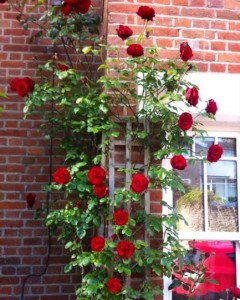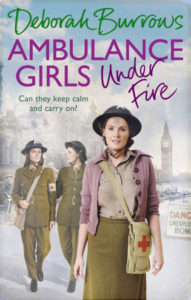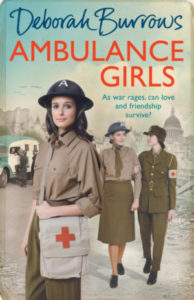9.00 on Friday morning.
The most frustrating thing about being free to do as you please is all the time available. How to organise your day so that it is productive, but also enjoyable and stimulating. I’m in the fortunate position of being able to spend time writing and researching – my two favourite things – in one of the loveliest parts of the globe, the village of Iffley, near Oxford, England, in late spring.
It’s far too tempting just to look out of my window at verdant gardens and birds and squirrels and dragon flies and bees. A short walk away is a ‘village shop’ that is manned by a woman at least one hundred and five years old, where they sell sandwiches made by women in the village according to a ‘rota’ posted up above the till. Yesterday I had egg, lettuce, cress and mayonnaise, and it cost me 1 pound 40p – bargain!
I’ll try this for a schedule: Answering emails and writing Facebook, blog and twitter for an hour each morning. Then doing my research on the Web or ordering books to be read at the Bodleian Library in Oxford – it takes a day for them to arrive if they’re not on the shelves. Then writing for a couple of hours. Then lunch. More writing. Then a walk with Toby either into Oxford, or as we did yesterday, along the Thames Path.
We did that yesterday. It was a lovely afternoon, warm with sunshine peeping out occasionally through the clouds. We walked south and ended up in Sandford-on-Thames and had a drink at the King’s Arms on the river, sitting under a huge horse chestnut and watching the boats in the lock there. The walk took us through Wind in the Willows country, past fields with the river to our left, under a disused Victorian railway bridge, now fading into rusty oblivion. Also under the noisy A423, the Eastern By-pass; the traffic noise followed us for far too long, competing with the sound of water birds and song birds. Intriguing little paths ran off to our right through thickets into woods. Beyond the muddy fields were hazy little hills, perhaps the Chilterns? After we’d passed the delightfully named ‘Fidler’s Elbow’ – a part of the river that is, of course, shaped like an elbow – we crossed a bridge to a long island. The path took us past a weir where a father and son were on the bridge playing Pooh Sticks in the tumultuous current, and then we were at Sandford Lock.
As we arrived, a narrow boat, prettily painted and manned by an elderly couple, was entering the lock and we watched the gates close and the water rise. The lock is much deeper than our little Iffley Lock, at least two metres change in the level of the water. Beyond the lock was the Kings Arms, which is on the river at the site of an old – very old – Norman old – mill, that has now disappeared. The pub garden was quite crowded and there were masses of children running around. I thought I’d earned my cider and chips!!
Wikipedia says of Sandford:
“Jerome K. Jerome described Sandford as “a very good place to drown yourself in” in his book Three Men in a Boat. The watercourse behind the lock-keeper’s house (dated 1914) flows from the “big lasher” weir which creates strong currents and eddies. In spite of the danger, this was a favourite swimming place up to the mid-20th century. In 1921 the river here claimed the lives of three Christ Church students, including Michael Llewelyn Davies, the adopted son of J. M. Barrie, who was the inspiration for Peter Pan. An obelisk that has stood here since at least 1821 records the deaths of six Christ Church students who drowned here in three separate incidents between 1843 and 1921. Even into the 1950s the river at Sandford-on-Thames was still regarded as a place to come and relax. On Sundays people came from Oxford to swim at The Lido below the lock and to picnic. The King’s Arms had extensive tea-lawns on which to spend lazy Sunday afternoons.”
I’d like to visit places associated with literary figures or books I’ve enjoyed. Any suggestions? I want to visit Kelmscott (William Morris’s house), Batemans (the home of Rudyard Kipling), Hardwick House and Mapledurham House (both credited as ‘the real Toad Hall’), Down House (Charles Darwin), Sissinghurst (Vita Sackville West). Any other suggestions?
Meanwhile, now I need to keep researching The Battle of Britain.
Here’s a lovely photo of the roses that climb the wall of the house adding ours. They lift my heart whenever I return home:




